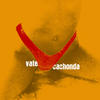Worldwide acclaimed pianist Sebastián Forster ventured into accomplishing a
lifetime-legacy major project of immense proportions: the recording of the 32
Piano Sonatas of Ludwig van Beethoven, in an ongoing creative effort during 10
albums, from 2009 to early 2012.
Sebastián is a true Beethovenian, he breathes and experiences Beethoven's every
single emotion, of true love, drama, passion, desperation, beauty and darkness.
Living Beethoven with every key stroke is an experience of monumental inner
impact, only at reach for the daring soul and the truly talented soloist.
Famous for his deeply moving and highly original interpretations and dazzling
mastery of his repertoire, Sebastián continues this travel through the universe
of Beethoven in this Volume 6 with four Sonatas from 1802 and 1804.
The Piano Sonata No. 18 in E-flat major, Op. 31, No. 3, is a sonata for solo
piano by Ludwig van Beethoven, the third and last of his Op. 31 piano sonatas.
The work dates from 1802. A playful jocularity is maintained throughout the
piece, earning it the occasional nickname of The Hunt, although like many of
Beethoven's early works, the 'jocular' style can be heard as a facade,
concealing profound ideas and depths of emotion. The sonata consists of four
movements.
The Piano Sonata No. 19 in G minor, Op. 49, No. 1, and Piano Sonata No. 20 in G
major, Op. 49, No. 2, are short (and are considered relatively simple sonatas by
some pianists) by Ludwig van Beethoven, published in 1805 (although the works
were likely composed several years earlier). Both works are approximately eight
minutes in length, and are split into two movements. These sonatas are referred
to as the Leichte Sonaten to be given to his friends and students.
The Piano Sonata No. 20 was possibly written around the time Beethoven composed
the third and fourth sonatas, but because it was published in Vienna in 1805,
nearly a decade after it was actually written, it was assigned then-current opus
and sonata numbers, which classified it alongside works from the composer's
middle period. Very similar circumstances caused Beethoven's B-flat Piano
Concerto to appear as his second, even though it predated the first.
Beethoven often suppressed works in his early years, either revising them later
for publication or determining that they were not fit. In fact, he withheld many
early works from publication for life. In the case of these two sonatas, it was
Caspar van Beethoven, the composer's brother, who decided they were worthy of
publication. Against the composer's will, he presented them to a publishing
house, thus allowing posterity to hear works that might otherwise have been lost
or destroyed.
Beethoven's Piano Sonata No. 21 in C major, Op. 53, known as the Waldstein, is
one of the three most notable sonatas of his middle period beside the
Appassionata, Op. 57, and Les Adieux, Op. 81a. Completed in summer 1804 and
surpassing Beethoven's previous piano sonatas in its scope, the "Waldstein" is a
key early work of Beethoven's 'Heroic' decade (1803-1812) and set a standard for
piano composition in the grand manner. The sonata's name derives from Beethoven's
dedication to his close friend and patron Count Ferdinand Ernst Gabriel von
Waldstein of Vienna. Like the Archduke Trio (one of many pieces dedicated to
Archduke Rudolph), it is named for Waldstein even though other works are
dedicated to him. It is also known as 'L'Aurora' (The Dawn) in Italian, for the
sonority of the opening chords of the third movement, which conjures an image of
daybreak.
One of his greatest and most technically challenging piano sonatas, the first
section of the Rondo requires a simultaneous pedal trill, high melody and rapid
left hand runs while its coda's glissando octaves, written in dialogue between
the hands, compel even advanced performers to play in a simplified version since
it is more demanding to play on the heavier action of a modern piano than on an
early 19th Century instrument.
Hear Beethoven as you have never heard it before, getting lost in the world of
invigorating ideas and emotional virtuosity that has made Sebastián Forster one
of the outstanding interpreters of the classical repertoire currently working on
the world stage today.




